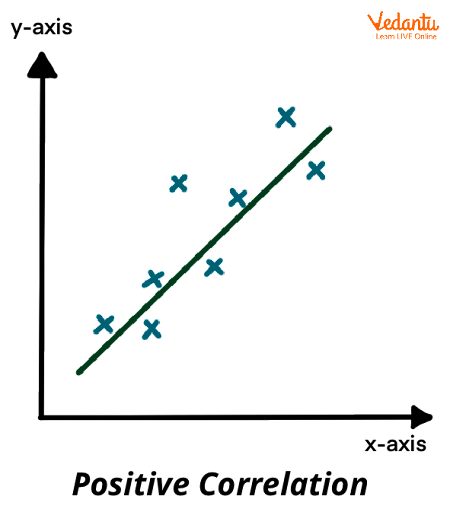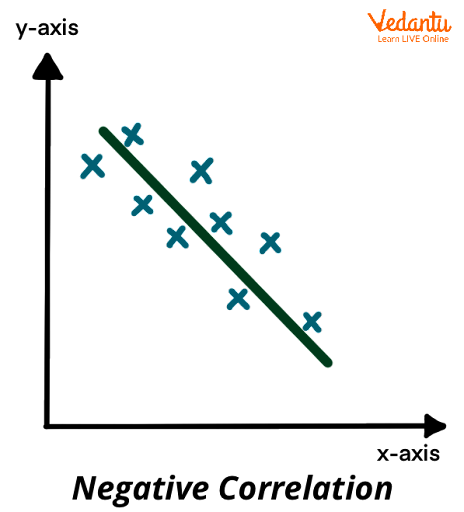




An Overview of the Correlation
We are aware that as a product's price rises, so will its demand. On the other hand, as prices rise, so will the quality of services. These are just a few instances of positive and negative correlation. Let's take a look at this. A positive correlation exists when one variable positively or negatively influences another, such as when one variable increases while another decrease. It's a common method of investigating relationships in psychology and statistics, and it can help predict the outcome of a specific activity. How many instances of a positive association you can find in your daily life may surprise you!
What is Correlation?
Correlation is a statistical method for determining the relationship between two variables. For example, correlation can be used to describe the relationship between the price of a good and the amount desired. It describes the relationship between two variables but not any cause-and-effect relationships. It simply reveals the strength and direction of the relationship between two variables. Correlation can be of two types:
Positive correlation
Negative correlation
Different Types of Positive Correlation
Positive Correlation
When two variables move in the same direction at the same time, they are said to be positively linked. According to economic theory, supply grows in lockstep with the price. This is because vendors will sell more when prices are high because it is advantageous for them to do so. Price and quantity delivered are thus said to be positively related. Another name for this is the law of supply.

Positive Correlation
The values of the correlation coefficients describe the strength or amount of the relationship between two variables. The correlation gradations are as follows: There are three types of correlation: limited correlation, perfect correlation, and zero correlation.
The correlation is perfect when two variables change in the same way. It is frequently subdivided into two groups.
A positive correlation exists when two variables move in the same direction. Height and weight will come under positive correlation examples, taller people tend to weigh more, and vice versa.
More perfect correlation examples include the following:
Running on a treadmill for a longer period of time will help you burn more calories.
As your hair grows longer, you will need more shampoo.
You feel more financially secure as you save more money.
Ice cream sales rise in tandem with the temperature.
The more gas you put in your car, the further it will travel.
The more time you spend in the bath, the more wrinkled your skin becomes.
Perfect Positive Correlation
A perfect positive correlation is formed when the proportionate change in two variables occurs in the same direction. When there is a perfect positive correlation between two variables, the correlation coefficient is +1.
Negative Correlation
When two variables have a negative correlation, it means that when one variable rises, the other falls. Height above sea level and temperature are examples of negative links. Similarly, while climbing the mountain, the temperature drops (decrease in temperature).

Negative Correlation
Perfect Negative Correlation
When the proportionate change in two variables moves in the opposite direction, they have a perfect negative correlation. The correlation coefficient for a perfect negative correlation is -1.
Significance of Positive and Negative Correlation
Positive and negative correlation coefficients can be used as indicators by investors. Look for a significant positive correlation to determine which way the wind is blowing with a specific stock in relation to the overall economy. A negative correlation can also be beneficial. It is used in hedging, for example, on the theory that if the value of one asset falls, the value of another will rise.
Case Study
Highlight Positive Correlation Examples in Real Life.
Below are the positive correlation examples:
Snow shovel sales are increasing as the weather turns colder.
As your coffee consumption increases, so does the amount of time you stay awake.
The size of a child's clothing changes as they grow.
As the tread on your car's tyres wears down, so does its traction on the road.
The more you work your muscles, the stronger they become.
Less effort put into marketing your business will result in fewer new customers.
Employees' earnings increase as they work more hours.
Compound interest grows as an investor holds their investments for a longer period of time.
When employees receive raises, their morale improves.
When employees are paid well, their productivity increases.
Hiring more salespeople will result in increased revenue for the company.
Conclusion
The adage "Correlation is not causation" states that two variables do not always have to be related in order for one to be the cause of the other. A correlation seeks a connection between variables by identifying them. An experiment investigates the impact of an independent variable on a dependent variable, whereas a correlation looks for a relationship between two variables. This means that, whereas a correlation can only predict a relationship because an unaccounted-for external variable may be involved, an experiment can predict cause and effect (causation).
FAQs on Positive Correlation: Meaning and Examples
1. Provide correlation examples in real life.
Below are the examples of correlation examples in real life:
Body Fat in Comparison To Time Spent Running
The more time a person spends running, the lower their body fat percentage becomes. In other words, there is an inverse relationship between variable body fat and variable running time. As running time increases, body fat decreases.
Exam Results and Television Viewing Habits
When a student watches more television, his or her exam results usually suffer. In other words, there is a negative relationship between variable TV viewing time and variable exam grades. Exam results deteriorate as television viewing time increases.
2. Give some perfect positive correlation examples or perfect correlation examples.
Below are the Perfect Positive Correlation Examples:
A simple example of positive correlation is the use of an interest-bearing savings account with a fixed interest rate. The more funds deposited into the account and the more interest earned, the more interest can be accrued. Similarly, an increase in interest rates leads to an increase in interest generated, whereas a decrease in interest rates leads to a decrease in the amount of actual interest accrued. A tyre and auto body shop's stock and an online retailer's stock, for example, are unlikely to have much in common, whereas two retailers will have a stronger link. This is done so that businesses with a wide range of operational models can generate goods and services.
3. What is inverse correlation?
An inverse correlation depicts a relationship between variables that move in opposite directions, whereas a positive correlation explains variables that move in the same direction. Another term for this is a negative correlation. In the investment world, beta levels below zero indicate negative correlations; for example, a company with a beta of 1.0 will move in the exact opposite direction of the benchmark's trends. Because correlation does not imply causation, the notion that correlation implies causation is illogical. The existence of a positive correlation between two variables does not always imply that one influences the other. It's possible that an unidentified third factor will have an effect on both variables or that the apparent association between the variables is just a coincidence.























